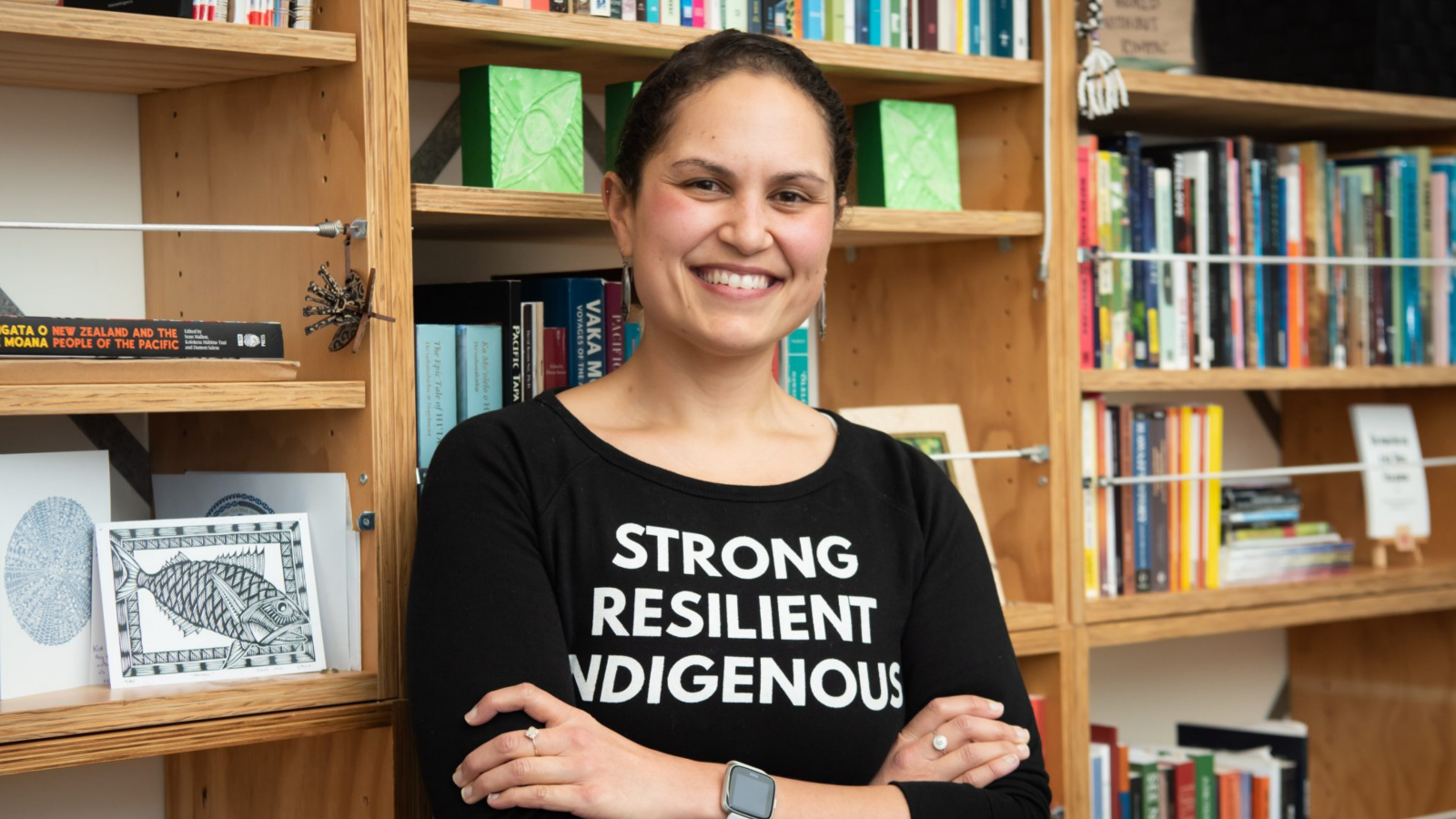
But after going home to Hawaiʻi to stand with protectors on the island’s sacred mountain, Mauna Kea, and then visiting Ihumātao in Auckland, she realised she needed to rewrite the thesis to take into account Indigenous persistence.
Indigenous persistence, as Case explains, is about survival and continuance. "It is about continuing to experience one’s self as Indigenous and ensuring the next generations can do the same. It is about ensuring Indigenous people will always have a place in the world."
Dr Case’s book Everything Ancient Was Once New: Indigenous Persistence from Hawai’i to Kahiki explores Kahiki. “This is similar to the Māori concept of Hawaiki, as it is where we say we came from but it doesn’t have a specific locationon a map. I describe it as the ancestral memory of migration and movement and linkages to the Pacific,” she says.
In the nineteenth century, there was a vibrant Hawaiian language print culture, says Dr Case, and after writing was introduced by missionaries Hawaiʻi had one of the highest literacy rates in the world. This helped with her research, as those writing newspapers were using them to record their history as well as reporting the news.
“You would find their oral traditions. You would find prayers, songs, epic legends, stories that would carry on for a year.
“When I started to think about the book, I thought about how I could add to that genealogy of change recorded in the newspapers. How could I do what my ancestors did and treat Kahiki not as a concept that functioned in the past but give it a new meaning today,” she says.
“I realised this book needed to be about indigeneity, and Indigenous persistence, particularly in the context of protecting whenua, ʻāina [land], and our right to be Indigenous.”
One of the other concepts Dr Case explores is the role of aloha ‘āina in helping Indigenous people protect lands, waters, and oceans. “It is a love of place, a fierce love, the kind of love that comes with a lot of heartache. It is what motivates people to stand on whenua, to stand on ‘āina, no matter what.
“When I went up to Ihumātao, after leaving the mountain at home in Hawaiʻi, I realised that same aroha/aloha was there. People were willing to give up everyhing to sit and keep the whenua warm. So while the specifics of the two movements were different, that sense of loving a place fiercely and doing everything you can to protect it was definitely something I witnessed there.”
There are similarities and differences in the Hawaiian and Māori colonisation experience, says Dr Case, but one of the key similarities is a shared experience of struggle.
In the book, one of the stories she tells is of a single-hulled canoe built in the 1990s by a group of Hawaiian men wanting to revitalise the art of canoe building. Dr Case uses the canoe to talk about material culture in the contexts of cultural revitalisation and Indigenous persistence. Canoes, for example, have been sanctioned by the settler colonial state, she explains, as pieces of material culture that are not threatening to colonial power. They have become pieces of “allowable” culture.
Altars, on the other hand, as Dr Case writes about in the context of Mauna Kea, are viewed as threats for the ways they reinforce Indigenous persistence, especially when used in movements to protect land in an island chain that boasts one of the highest per capita US military presences in the world.
“We had shrines built on Mauna Kea, and they were dismantled and destroyed. In the context of cultural revitalisation, it becomes tricky when the objects you create to revitalise your practice [like canoes] get taken by the government in a particular way. When we stop recognising that and start feeding into it, it can be quite dangerous.”
Dr Case imagines a future for Hawaiʻi where there are no tanks, no bombs, no destruction of land, where Indigenous people have ʻāina, and have the right to grow and raise their children as Indigenous on the land in Hawaiʻi.
“My commitment to the future is to continue on the fight of those who came before, so my children and grandchildren won’t have to fight the exact same fight.”
Everything Ancient Was Once New: Indigenous Persistence from Hawai’i to Kahiki is being launched in Wellington.
